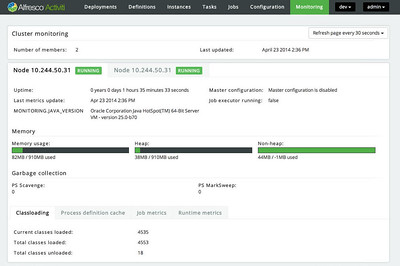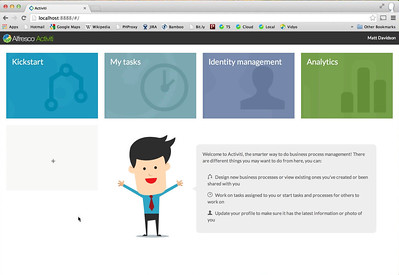At analyst events, I tend to not blog every presentation; rather, I listen, absorb and take some time to reflect on the themes. Since I spent the first part of last week at the analyst event at IBM Impact, then the second half across the country at Appian World, I waited until I had to pull all the threads together here. IBM keeps the analysts busy at Impact, although I did get to the general session and a couple of keynotes, which were useful to provide context for the announcements that they made in pre-conference briefings and the analyst event itself.
A key theme at Impact this year was that of “composable business” (I have to check carefully every time I type that to make sure I don’t write “compostable business”, but someone did point out that it is about reuse…). I’m not sure that’s a very new concept: it seems to be about assembling the building blocks of business capabilities, processes and technologies in order to meet the current needs without completely retooling, which is sort of what we’ve all been saying that BPM, ODM and SOA can do for some years now.
Smarter Process is positioned as an enabler of composable business, and is IBM’s approach for “reinventing business operations” by enabling the development of customer-centric applications that push top-line growth, while still providing the efficiency and optimization table stakes. Supporting knowledge workers has become a big part of this, which leads to IBM’s biggest new feature in BPM: the inclusion of “basic” case management within BPM. The idea is that you will be able to support a broader range of work types on a single platform: pre-defined “structured” processes, structured processes with some ad hoc activities, ad hoc (case) work that can invoke structured process segments, and fully ad hoc work. I’ve been talking about this range of work types for quite a while, and how we need products that can range across them, because I see so few real-world processes that fit into the purely structured or the purely unstructured ends of the spectrum: almost everything lies somewhere in the middle, where there is a mix of both. In fact, what IBM is providing is “production case management”, where a designer (probably not technical, or not very technical) creates a case template that pre-defines all of the possible ad hoc activities and structured process fragments; the end user can choose which activities to run in which order, although some may be required or have dependencies. This isn’t the “adaptive case management” extreme end of the spectrum, where the end user has complete control and can create their own activities on the fly, but PCM covers a huge range of use cases in business today. Bruce Silver
“But wait,”, you say, “IBM already has case management with IBM Case Manager. What’s the difference?” Well, IBM BPM (Lombardi heritage) provides full BPM capabilities including process analytics and governance, plus basic case capabilities, on the IBM BPM platform; IBM Case Manager (FileNet heritage) provides full content and case capabilities including content analytics and governance, plus basic workflow capabilities, on the IBM ECM platform. Hmmm, sounds like something that Marketing would say. The Smarter Process portfolio graphic includes the three primary components of Operational Decision Management, Business Process Management and Case Management, but doesn’t actually specify which product provides which functionality, leaving it open for case management to come from either BPM or ICM. Are we finally seeing the beginning of the end of the split between process management in BPM and ICM? The answer to that is likely more political than technical – these products report up through different parts of IBM, turning the merging/refactoring of them into a turf war – and I don’t have a crystal ball, but I’m guessing that we’ll gradually see more case capabilities in BPM and a more complete integration with ECM, such that the current ICM capabilities become redundant, and IBM BPM will expand to manage the full spectrum of work types. The 1,000th cut may finally be approaching. Unfortunately for ICM users, there’s no tooling or migration path to move from ICM to BPM (presumably, no one is even talking about going the other way) since they are built on different infrastructure. There wasn’t really a big fuss made about this new functionality or how it might overlap with ICM about this outside the BPM analyst group; in fact, Bruce Silver quipped “IBM Merges Case into BPM but forgets to announce it”. 
The new case management functions are embedded within the BPM environment, and appear fairly well integrated: although a simple web-based case design tool is used instead of the BPM Eclipse authoring environment, the runtime appears within the BPM process portal. The case detail view shows the case data, case document and subfolders, running tasks, activities that can be started manually (including processes), and an overall status – similar enough to what you would see with any work item that it won’t be completely foreign, but with the information and controls required for case management. Under the covers, the ad hoc activities execute in the BPM (not ICM) process engine, and a copy of ECM is embedded within BPM to support the case folder and documents artifacts.
The design environment is pretty simple, and very similar to some parts of the ICM design environment: required and optional ad hoc activities are defined, and the start trigger (manual or automatically based on declarative logic or an event) of each activity is specified. Preconditions can be set, so that an activity can’t be started (or won’t automatically start) until certain conditions are met. If you need ad hoc activities in the context of a structured process, these can be defined in the usual BPM design environment – there’s no real magic about this, since ad hoc (that is, not connected by flow lines) activities are part of the BPMN standard and have been available for some time in IBM BPM. The case design environment is integrated with Process Designer and Process Center for repository and versioning, and case management is being sold as an add-on to IBM BPM Advanced.
Aside from the case management announcement, there are some new mobile capabilities in IBM BPM: the ability to design and playback responsive Coaches (UI) for multiple form factors, and pushing some services down to the browser. These will make the UI look better and work faster, so all good there. IBM also gave a shout out to BP3’s mobile portal product, Brazos, for developing iOS and Android apps for IBM BPM; depending on whether you want to go with responsive browser or native apps as a front-end for BPM, you’re covered.
They also announced some enhancements to Business Monitor: a more efficient, high-performance pub-sub style of event handling, and the ability to collect events from any source, although the integration into case management (either in BPM or ICM) at design time still seems a bit rudimentary. They’ve also upgraded to Cognos BI 10.2.1 as the underlying platform, which brings more powerful visualizations via the RAVE engine. I have the impression that Business Monitor isn’t as popular as expected as a BPM add-on: possibly by the time that organizations get their processes up and running, they don’t have the time, energy or funds for a full-on monitoring and analytics solution. That’s too bad, since that can result in a lot of process improvement benefits; it might make sense to be bundling in some of this capability to at least give a teaser to BPM customers.
In BPM cloud news, there are some security enhancements to the Softlayer-based BPM implementations, including 2-factor authentication and SAML for identity management, plus new pricing at $199/user/month with concurrent user pricing scenarios for infrequent users. What was more interesting is what was not announced: the new Bluemix cloud development platform offers decision services, but no process services.
Blueworks Live seemed to have the fewest announcements, although it now has review and approval processes for models, which is a nice governance addition. IBM can also now provide Blueworks Live in a private cloud – still hosted but isolated as a single tenant – for those who are really paranoid about their process models.





